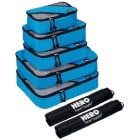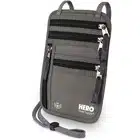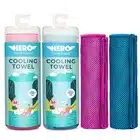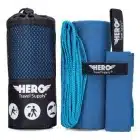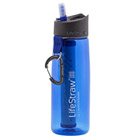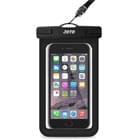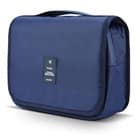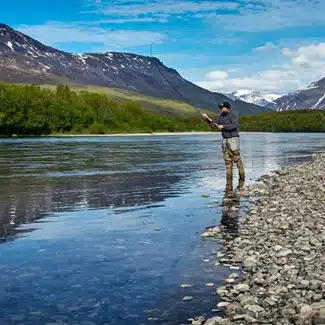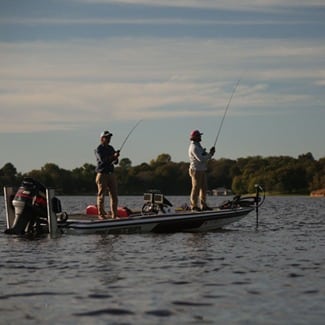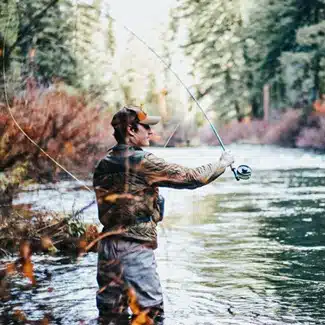SPRING – March, April, May
The weather that you will encounter on your fishing trip depends entirely upon your destination. Since a large number of our readers will be fishing in temperate North America, this section was written with this region in mind. If you plan to fish in another area, you can adjust your outfit accordingly.
In the spring, you can expect to encounter a mix of rain and sun, and there is a chance of getting hit with freezing temperatures early in the season. This time of year, it’s best to dress in layers, so that you can add or remove clothing as necessary to suit the current conditions. Start with a warm base layer and add hiking pants and a long-sleeved shirt. If it’s cold, layer up with a hoodie or sweater, and if you are fishing from a boat, don’t forget to wear your life jacket.
SUMMER – June, July, August
In the summer, you’ll want to be prepared for the sun and heat. It’s always nice to fish in shorts and a t-shirt, but don’t forget to put on plenty of sunscreen and wear a sunhat and glasses. If you are fishing from a boat or near a swift-flowing river, don’t forget to wear your life jacket. Evenings can be cool, so keep your warm layers and rain jacket close by.
Always remember that even in the summertime, hypothermia is a real risk. Most fishing emergencies happen this time of year when it’s least expected. If you are fishing from a boat or in a place where you are likely to fall in the water, it’s a good idea to invest in a dry suit, which will keep you warm even if you fall in the water.
FALL – September, October, November
The fall is one of my favorite times to go on a fishing trip – after the summer crowds have gone home but before the winter cold hits. It’s also the time for fish to spawn on many rivers. If you are after salmon, this is the time to go.
In the fall, dress for a wide variety of conditions. Start with a warm base layer and wear hiking pants or shorts depending on the conditions. Wear activewear shirts, and always keep a hoodie or down jacket ready for use. Late in the fall, be prepared to encounter freezing conditions or even snow.
WINTER – December, January, February
Winter fishing can be surprisingly rewarding if you are prepared for the weather. I’ll never forget my first-time ice fishing from a hole cut in a lake. In the winter, you’ll likely have your favorite fishing spot to yourself.
To fish in the cold season, you’ll need to be dressed for the worst-possible weather. Start with a full set of long underwear and wool socks, then add fleece pants, a sweater, and a down jacket. Cover up with a waterproof coat and pants, and don’t forget your gloves and boots. Keep your head warm with a beanie.




